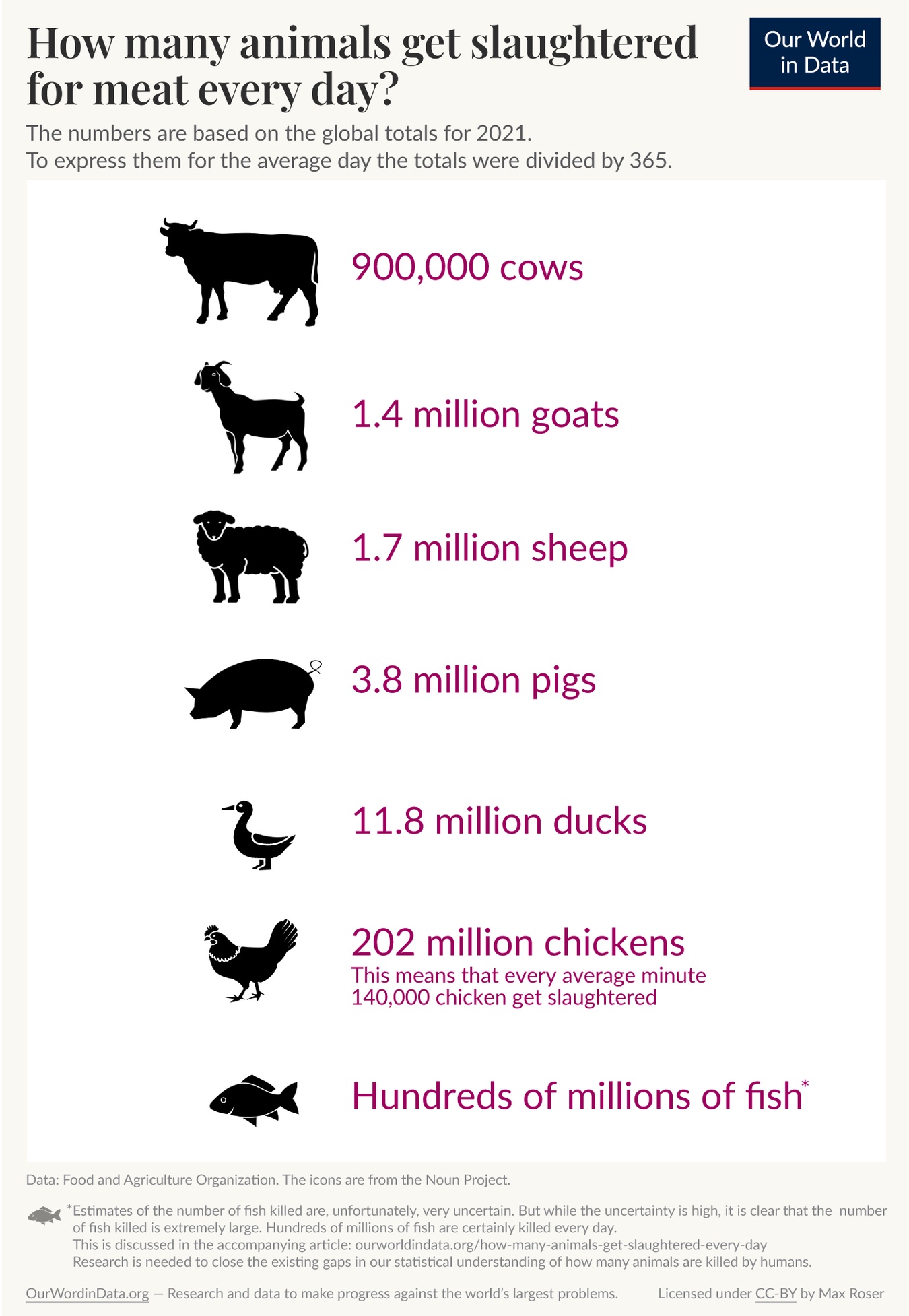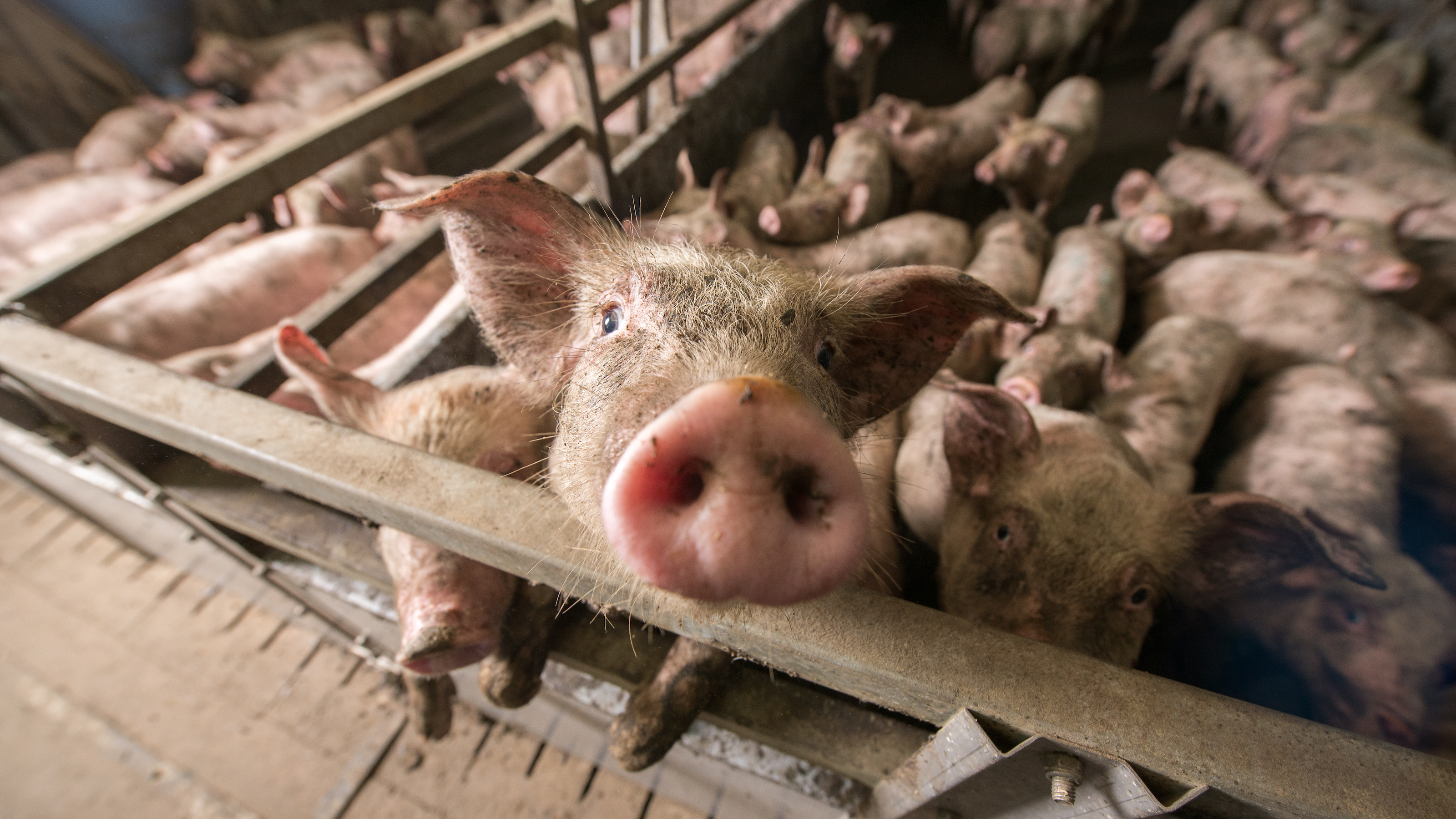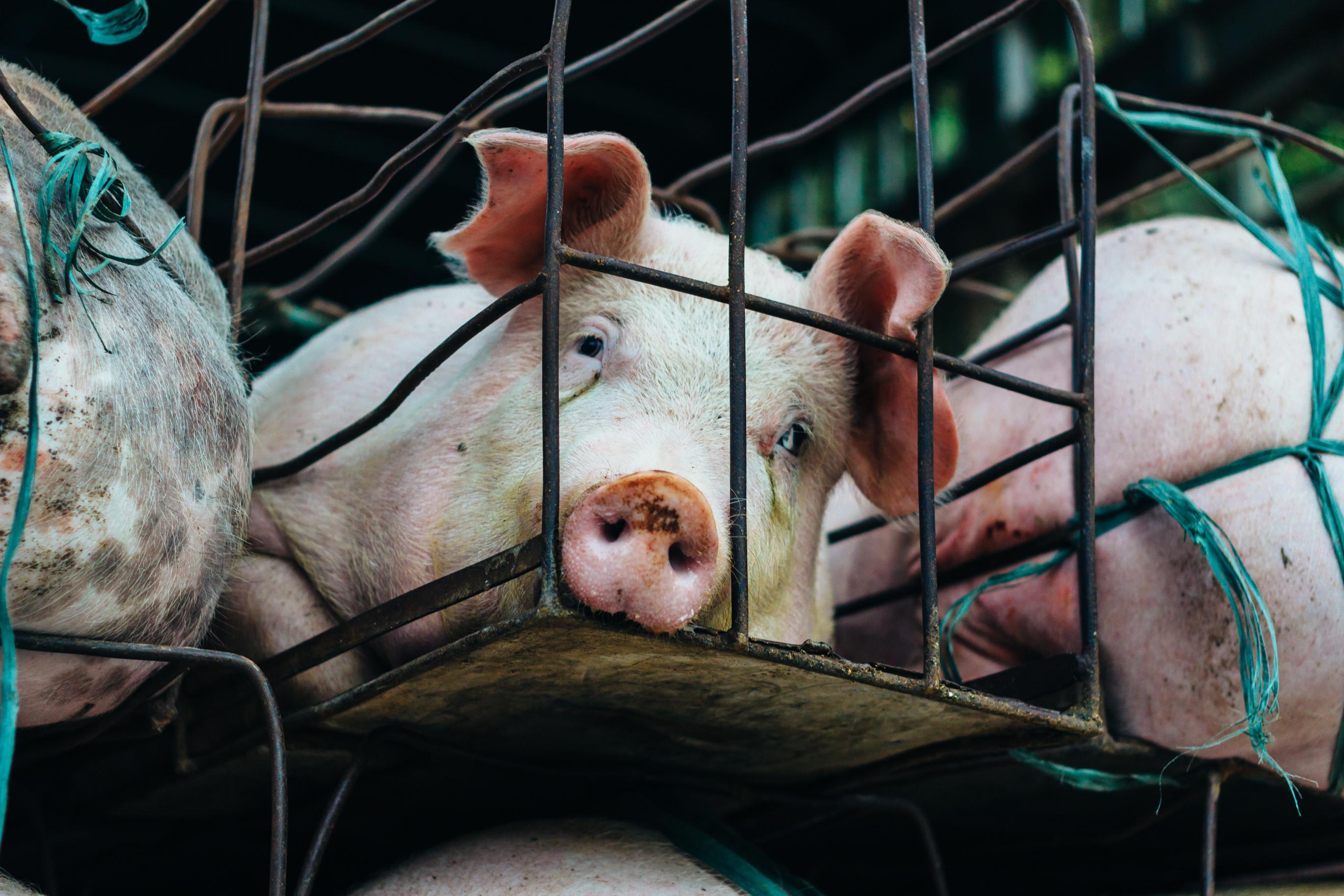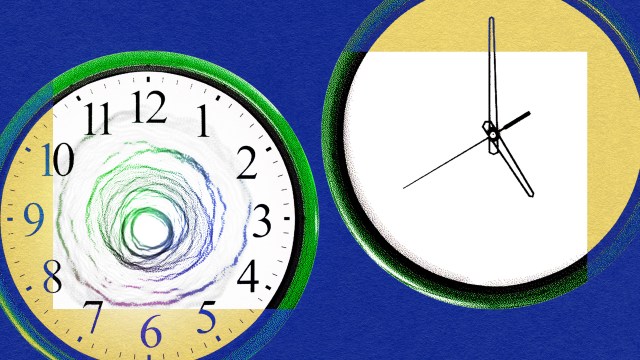How many animals get slaughtered every day?

The scale of humanity’s meat consumption is enormous. 360 million tonnes of meat every year.
This number is so large that I find it impossible to comprehend. What helps me to make these numbers more relatable is to turn them from the weight of meat to the number of animals and from the yearly total to the daily number. This is what I have done in the graphic below. It shows how many animals are slaughtered on any average day.
About 900,000 cows are slaughtered every day. If every cow was 2 meters long, and they all walked right behind each other, this line of cows would stretch for 1800 kilometers.1 This represents the number of cows slaughtered every day.
For chickens, the daily count is extremely large – 202 million chickens every day. To comprehend the scale, it is better to bring it down to the average minute: 140,000 chickens are slaughtered every minute.
The number of fish killed every day is very uncertain. I discuss this in some detail at the end of this article. But while the uncertainties are large, it is clear that the number of fish killed is large: certainly, hundreds of millions of fish are killed every day.
If you believe that the slaughter of animals causes them to suffer and attribute even a small measure of ethical significance to their suffering, then the moral scale of this reality is immense.

From the perspective of animal suffering, it is the absolute numbers of animals that matter, but if you want to explore this data in per capita terms, you can do so in our Animal Welfare Explorer.
It’s not just about how many farm animals are killed but also the suffering they endured while they were raised. The majority of the world’s farm animals are raised in dismal conditions. Pigs are held in cramped, stressful conditions, living a life in chronic discomfort and distress. Cows get their calves taken away to produce milk for human consumption, a practice under which both the mother and the calf suffer. Many animals are castrated without anesthetic. Chickens are often debeaked to stop them from fighting with other chickens out of discomfort and pain; many cannot turn around their entire lives.
What would be the benefits of reducing our meat consumption?
Meat production has a number of large negative impacts on the environment, wildlife, and our health.
Viewed from the other side, this means that the benefits of reducing meat consumption are large. What would some of these benefits be?
Less land use for agriculture and more biodiversity: The use of land for agriculture is the main driver of biodiversity loss.3 Today, almost half of the world’s ice- and desert-free land is used for agriculture, and most of this land is used by livestock. The total global land use for meat and dairy production sums up to 37 million square kilometers, an area as large as the entirety of the Americas — from Alaska in the North to Cape Horn in the South.For the data, see our page on land use.
As my colleague Hannah Ritchie showed, if we didn’t eat meat, it would be possible to reduce agricultural land from 4 to 1 billion hectares. Changes towards less meat consumption would have large benefits for animals around the world as wilderness could regrow to provide habitats for wildlife.4
Benefits for the world’s climate: Reducing global meat consumption would also help to address climate change: it would reduce direct emissions from burping cows and nitrous oxide from manure, but also reduce emissions from deforestation and land use change.
Less antibiotic resistance: Reducing the world’s meat consumption would decrease the use of antibiotics in livestock farming, a practice that contributesto the rise of antibiotic-resistant bacteria. This reduction could preserve the efficacy of existing antibiotics and the health of people around the world.
Lower risk of pandemics: Many infectious diseases originate in other animals. The high-density conditions in many meat production facilities create ideal environments for the mutation and spread of pathogens. Reducing global meat consumption would reduce the risk of zoonotic diseases and the risks of suffering another pandemic.
Less animal suffering: Coming back to the starting point of this short text, less meat consumption would mean less suffering for animals.
I think this future is possible. I can imagine a future in which our grandchildren look back at our time and find it hard to believe that we today are living in a world in which we kill hundreds of millions of fish, 900,000 cows, 1.4 million goats, 1.7 million sheep, 3.8 million pigs, 11.8 million ducks, and more than 200 million chicken every day.
Republished under a Creative Commons BY license from Our World In Data. Read the original article.





